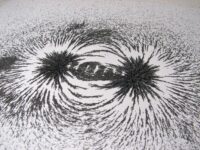1 + 2 + 3 + 4 + 5 + 6 + … = -1/12. Crazy, right? Let’s backtrack a little.
One plus two is three, plus three is six, plus four is ten, plus five is fifteen, plus six is twenty-one, and so on. This sum, referred to as the sum of all positive integers, seems to increase forever.
Usually, we would say this sum is divergent, meaning there is no clear number that it approaches or is equal to (as a counterexample, the sum of 1 + ½ + ¼ + ⅛ + … is convergent since the further we go, the closer to 2 we get). If the sum needed to be described using numbers, infinity would be the answer: the numbers increase forever, and so will the sum. However, a savant mathematician from the early 20th century, Srinivasa Ramanujan, found a different answer: -1/12. Through the following manipulation, he proved that the sum of all positive integers is -1/12.
Although this may seem like some rules of mathematics were broken, or the answer is arbitrary or random, it unexpectedly arises in quantum mechanics, specifically in the Casimir force. To find the total electrical energy inside a vacuum, two uncharged plates of infinite length and infinitesimally small thicknesses can be imagined [1, p. 70]. These uncharged conducting plates exert a force onto each other caused by interaction between quantum fluctuations from the photons in the field and the plates’ electrons. This type of problem involves summing all possible frequencies of photons, or mathematically, the sum of all positive integers [1, p. 70]. And magically, Ramanujan’s solution appears.
The equation below relates f(d), the force, and 𝜔, the frequency, to show that the sum of all positive integers multiplied by the constant 𝜋2d will yield the force between the plates. This directly involves Ramanujan’s sum of all positive integers.
Below, F stands for the electrical force between the plates and is equal to the opposite of the derivative of energy with respect to the distance between them. L is the distance between the plates and a third plate, and a is the area of the plates. π, ♄, and c are all constants: pi, Planck’s constant, and the speed of light, respectively.
The -1/12 finally arrived! Using fancy techniques like the limited factor e-a𝜔 /𝜋 to parametrize high-frequency responses and only considering when a0, we find a small but observable attractive force between the plates.
Physicist Anthony Zee, currently at the University of California, Santa Barbara, describes Casimir’s equation using his physical methods and reasoning and pokes fun at the mathematical “sleight of hand” Ramanujan might use [1, p. 73]. The unsolved question still remains, though, how both the physicist and the mathematician arrive at the same conclusion using two wildly different methods — Ramanujan only needed a few numbers and the operations of addition and subtraction, while Zee uses physical constants and operations derived from centuries of physical evidence.
The unsolved question still remains, though, how both the physicist and the mathematician arrive at the same conclusion using two wildly different methods.
The magnificence of this mathematical “glitch” is that it isn’t a glitch at all. Physicists need real number solutions to solve real-life equations, while mathematicians try to generalize overarching and theoretical concepts. Sometimes the result of their intersection is numbers that are strange, unfamiliar, and illogical.
Quantum Field Theory in a Nutshell, Second Edition, by Anthony Zee
String Theory Volume I: An Introduction to the Bosonic String, by Joseph Polchinski
The Casimir Effect
Muhammad Anadil Saeed Rao, Northeastern University PhD student
Christopher Beasley, Northeastern University Associate Director and Mathematics Graduate Director


